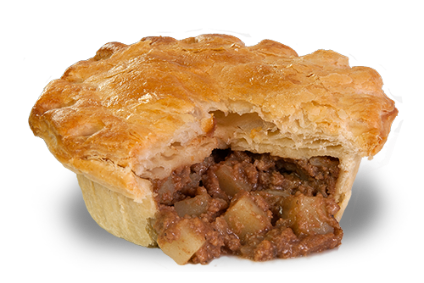April Fools Day is always guaranteed to give imaginative PR minds a little exercise so ‘ware ‘fake news’ of anything automotive on the first of the month. I by no means trawled the entire web for gags but we did receive some excellent spoofs with my favourite being Toyota Australia’s ‘PieAce’ van-based ‘convertible. Nice work on Photoshop. The meat pie (I’ll spare you some of the colloquial terms) is a staple snack in the Antipodes with a warmer lurking on most corner store and gas station counters. The real thing, sort of, does exist, though. We have a local coffee and snack vendor who turns up to the just-auto office with a chiller, commercial-standard coffee machine and snack warmer all neatly installed in a cleverly kitted out non-convertible VW van. And the earlier ‘lunch’ van shows up at breakfast time with a humongous warmer full of snacks plus a chiller for the drinks and sarnies.
Back to reality. Our analysis of future Kia models drew much interest – as such articles always do – and we learned how Faurecia was blending some recent acquisitions into a new business group. Last October, Faurecia announced it would acquire Clarion and closed the deal last month as that supplier became a wholly-owned group company. Faurecia Clarion Electronics combines Clarion with previously acquired Parrot Automotive and Coagent Electronics. With 9,000 people including 1,650 engineers, this new group will, Faurecia said, generate EUR2bn of sales by 2022.
Korean industry support for hydrogen is strong – we’re looking at you, Hyundai Group – so it was no surprise to learn the South Korean government is putting forward a transportation policy based on the fuel. Last month the government said it would push through a long-term strategy of switching the country’s fleet of trucks and construction machinery to run on hydrogen fuel-cell power by 2035. It also expects hydrogen-powered trains to be commercialised from 2025, with development and trial runs expected to be completed by 2022. The plans were revealed as the government’s latest response to rising pressure to address the growing problem of air pollution in the country, with fine dust singled out as a particularly serious threat to public health. With this new policy initiative, the government is targeting the main end-users of diesel fuel, a key source of fine dust.
Automakers aren’t just selling cars that run on hydrogen, either. Toyota has added SimpleFuel at its Motomachi Plant in Toyota City, Aichi Prefecture. This is a small water electrolysis-based machine for hydrogen generation and filling that can produce, store, and supply hydrogen by using electricity generated from solar power. SimpleFuel is a simplified hydrogen station that uses electricity from solar panels at the plant site to produce low-carbon hydrogen from the electrolysis of water, which is then supplied to fuel cell forklifts after it is compressed and pressurised. It can produce up to 99 Nm3/day (about 8.8 kg/day) of hydrogen, enough to fuel seven or eight forklifts. Its compact size means it can be installed in small spaces, making it suitable for refueling such vehicles within the plant. Toyota aims to reduce CO2 emissions at Motomachi and intends to support the accumulation of new technology and knowledge.
This shows that home or business vehicle filling on a suitable scale may well be the future – Honda – which is also into hydrogen – has previously sold a system – ingeniously named Phill, if memory serves – to refuel natural gas powered cars from domestic mains in the US. This week, Mitsubishi told us more about its new Dendo Drive House (DDH) package which connects car, building and electricity grid. Unveiled at the 2019 Geneva show last month, DDH is an ‘eco-system’ for home and vehicle to generate, store, and share power, making the car part of the energy infrastructure. Retail sales start in Japan and Europe this year. MMC said DDH benefits from real-life EV usage and behaviour intelligence gathered worldwide from 190,000 Outlander PHEV customers and also from several V2X and EV pilot projects. Using V2X compatibility, DDH is a packaged system comprising the EV or PHEV vehicle, a bi-directional charger, solar panels, home battery and a Home Energy Management System (HEMS). It is designed for home use but could be expanded to corporate or industrial facilities.
Despite the politicians’ failure to deliver Brexit on due date, UK plant closures (and other preparations) have gone ahead, industry figures who’ve spent valuable time on contingency plans no doubt gnashing teeth at the ongoing uncertainty kicked down the road to 12 April at the earliest. Not unsurprisingly, the subject got yet another mention at an SMMT gathering in London yesterday. The ongoing ‘don’t know yet’ is understandably frustrating. At the same event, Aston Martin chief Andy Palmer didn’t mince his words, either. And not just on Brexit.
By the way, our brand-new digital magazine has gone live.
Have a nice weekend.
Graeme Roberts, Deputy Editor, just-auto.com







